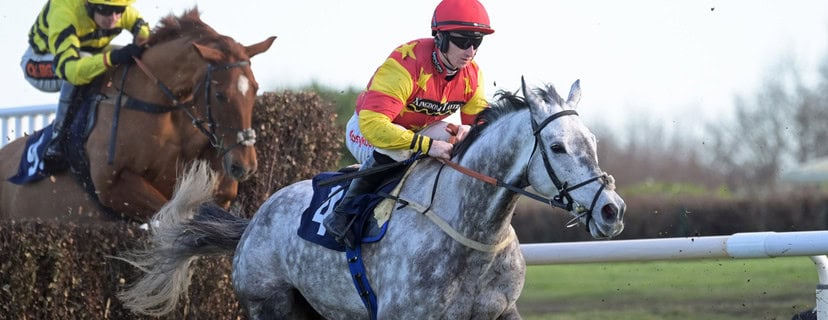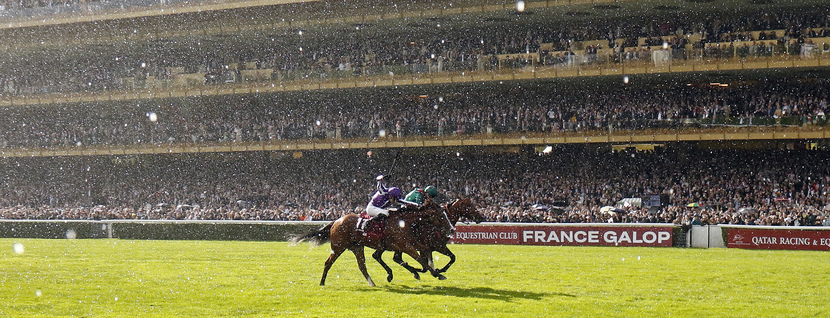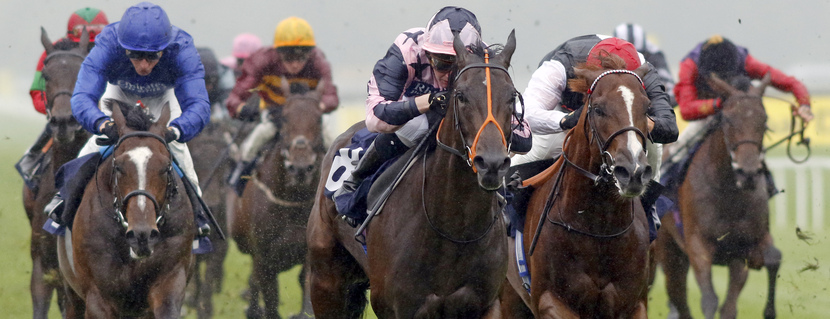There are few racing betting mediums as divisive as Southwell All-Weather, writes Jon Shenton. I know people who barely acknowledge its existence, and yet, in the other camp, are people like me: I absolutely love it with every fibre(sand) of my being!
Indeed, I love winter all weather racing, full stop. It’s probably as a result of me getting some (well earned) gardening leave from January to March 2017, when I really started to immerse myself in the world of racing. Those halcyon days of studying my new toys (Geegeez Gold being the main one) in the morning and watching the racing in the afternoon on ATR will live long in the memory. I was drawn to Southwell because it seemed a bit easier to navigate than the complicated world of National Hunt racing. No vagueness on ground, no fences or hurdles to consider, and a whole stack of course form to evaluate. Perhaps some moderate, relative early success helped too.
Whilst it may not be to the taste of everyone, supporters assert that the deep, stamina sapping test provided by the track offers a unique challenge and adds to the rich tapestry of UK racing. Arguably, it serves as an outlet for horses to show their ability who aren’t ordinarily suited to other racing surfaces.
It also has the important attraction of familiar names returning year after year, which as we know isn’t then norm for the racing on the level. It may be a stretch to claim superstar status for the main protagonists, but there are legends such as La Estrella (16 wins from 21 runs at the course) and General Tufto, who has run no less than 125 times on the fibresand over the last 10 years. 125 times and still counting!
To be honest, that’s even more frequently than I’ve attempted to explain odds and probability to my poor, not really interested, long suffering and very tolerant partner. Yes, on occasion I’m surprised I have one too! Anyway, let’s crack on. What follows are a few thoughts and insights which I hope will inform your Southwell wagering hereafter.
USA Bred horses at Southwell
It’s relatively well documented that horses with a pedigree originating from the good ‘ole US of A are worth consideration on the fibresand. There is certainly logic in this given the perceived proximity between the Southwell surface and the dirt tracks of America. The table below illustrates track runners by sire origin, for all races in 2012 onwards (three major countries only included)
| Origin of Stallion | Runs | Wins | Win% | P/L (SP) | Place% | ROI (SP) | A/E |
| (GB) | 7881 | 892 | 11.3 | -1815.6 | 29.3 | -23.0 | 0.86 |
| (IRE) | 5919 | 700 | 11.8 | -1327.8 | 30.1 | -22.4 | 0.85 |
| (USA) | 1248 | 225 | 18.0 | 155.6 | 38.8 | 12.5 | 1.03 |
Southwell (AW) runners by country of origin, 1st Jan 2012 to present
The picture is pretty clear: US-bred horses outperform their UK- and Irish-bred counterparts significantly, winning more often (18%), beating market expectations (1.03) and returning a profit (12.5%) at SP.
Having said that it’s not ‘backing blind’ territory in my opinion, especially given the fact there are some exceptionally big priced winners in the sample. The biggest of all was a 100/1 shot, the Derek Shaw-trained Hammer Gun, who is definitely worth putting in the tracker for future Southwell entries as we will see shortly.
The Hammer bolted up in that particular race and, if you’re going for the Hail Mary play, I can think of worse places to do it than backing a US-bred runner at Southwell who is unproven on the surface.
As USA horses have a positive record at the track it would make some sense for American stallions to have similarly favourable numbers.
The below table shows sire records at Southwell for the same period. This time I’ve only considered runners with a maximum SP of 20/1. The usual reasons apply: I’m looking for angles which will return with a modicum of regularity. Whilst there can be value at larger prices if you look hard and wait long enough, it’s not a game I want to play, or perhaps I can’t afford too long between drinks. 20/1 works for me, I know some of you prefer shorter. If you do, the data is there in the Geegeez Query Tool – go play!
| Stallion | Runs | Wins | Win% | P/L (SP) | Place% | ROI (SP) | A/E |
| Key Of Luck (USA) | 67 | 15 | 22.4 | 21.8 | 47.8 | 32.5 | 1.39 |
| Dubawi (IRE) | 79 | 26 | 32.9 | 64.2 | 45.6 | 81.2 | 1.34 |
| Ballet Master (USA) | 53 | 9 | 17.0 | 1.3 | 43.4 | 2.4 | 1.30 |
| Poets Voice (GB) | 53 | 11 | 20.8 | 35.2 | 54.7 | 66.4 | 1.26 |
| Refuse To Bend (IRE) | 64 | 16 | 25.0 | -5.2 | 40.6 | -8.2 | 1.23 |
| Speightstown (USA) | 85 | 20 | 23.5 | 8.2 | 51.8 | 9.6 | 1.21 |
| Street Cry (IRE) | 129 | 35 | 27.1 | 40.5 | 50.4 | 31.4 | 1.21 |
| Invincible Spirit (IRE) | 130 | 32 | 24.6 | 22.0 | 37.7 | 16.9 | 1.20 |
| Showcasing (GB) | 55 | 10 | 18.2 | 24.0 | 45.5 | 43.6 | 1.12 |
| Captain Gerrard (IRE) | 105 | 21 | 20.0 | 54.3 | 40.0 | 51.7 | 1.10 |
| Clodovil (IRE) | 58 | 11 | 19.0 | 3.8 | 34.5 | 6.5 | 1.10 |
Sire performance at Southwell (AW) 1st Jan 2012-present at 20/1 SP or less
The table of top Southwell AW stallions has smattering of USA sires on the list, no major shock there. And, in the case of Street Cry, he was raced on dirt in America and latterly Dubai, winning the Grade 1 Stephen Foster in US and the Grade 1 Dubai World Cup in Dubai.
Ordinarily I’d now be searching through these data, trying to find a few nice angles to share and adopt over the next few months. In general, though, Southwell is a different proposition. Angles still have relevance but the number of course specialist horses can paint a different picture. I’ve already referred to the fact that one of the joys of the track is the number of repeat runners. Taking the top of the stallion charts (Key of Luck) we can see where the problem lies in angle creation.
This graph shows all of Key of Luck’s runners by individual animal, illustrating runs (blue) and wins (orange). The conclusion rapidly emerges: all of Key of luck’s progeny wins have been delivered by three individual horses, with 14 of the 15 coming from The Lock Master and Serenity Now! Even the most prolific stallion on the list, Street Cry, sire of the Australian darling, Winx, has a third of his victories from just two horses, namely Tatting and Fluctuation.
Based on this I don’t feel like many genuine angle opportunities exist in sire data. The samples are too small and the number of progeny involved are insignificant in many cases. No, for me, finding the right individual horses is the key. Then tracking and following them closely can be a productive method with which to approach the fibresand puzzle. Having said that, any Key of Luck or Street Cry progeny running at Southwell are still of interest and I’ll be watching them all closely and backing where conditions appear to be right.
Southwell trainers
Like any track across the world there are handlers who seem to know what is required for the unique Southwell test. Using the same approach as the sire table above here is the equivalent view for trainers, again sorted by A/E.
| Trainer | Runs | Wins | Win% | P/L (SP) | Place% | ROI (SP) | A/E |
| Carroll, D | 101 | 24 | 23.8 | 37.6 | 41.6 | 37.3 | 1.63 |
| Fell, Roger | 55 | 11 | 20.0 | 33.8 | 38.2 | 61.4 | 1.48 |
| Bailey, A | 84 | 17 | 20.2 | 59.8 | 40.5 | 71.1 | 1.29 |
| Furtado, Ivan | 60 | 12 | 20.0 | 18.0 | 33.3 | 30.0 | 1.28 |
| Brown, D H | 67 | 15 | 22.4 | -6.8 | 43.3 | -10.2 | 1.25 |
| Nicholls, D | 103 | 22 | 21.4 | 32.9 | 37.9 | 31.9 | 1.25 |
| McCabe, A J | 184 | 34 | 18.5 | 31.1 | 36.4 | 16.9 | 1.19 |
| Dwyer, C A | 82 | 19 | 23.2 | 14.3 | 53.7 | 17.4 | 1.16 |
| Shaw, D | 251 | 44 | 17.5 | 5.5 | 41.8 | 2.2 | 1.15 |
| Burke, K R | 118 | 28 | 23.7 | 28.7 | 40.7 | 24.3 | 1.13 |
| Kirby, P A | 60 | 11 | 18.3 | -11.6 | 40.0 | -19.3 | 1.11 |
| Butler, John | 75 | 19 | 25.3 | 9.8 | 45.3 | 13.1 | 1.10 |
| Bowring, S R | 209 | 33 | 15.8 | -12.4 | 35.9 | -5.9 | 1.09 |
Southwell (AW) runners by trainer from 1st Jan 2012 to present at 20/1 or less SP
As is becoming tradition it feels right to have a quick delve into the top name on the list, in this case Declan Carroll. The Malton-based trainer sends a high proportion of runners to the Nottinghamshire track. Indeed, the only course that is frequented more by his team is Thirsk, relatively local to the outfit.
Again, like the Key of Luck data, on the face of it, it seems that backing the Carroll stable representatives blindly is a good idea. In truth, it might be: there is a healthy strike rate, fantastic A/E performance and a reasonable return on investment. On closer inspection though, we run into a familiar theme.
This graphical representation shows Carroll horses that have had 3 or more runs on the fibresand track from 2012 onwards at an SP of 20/1 or less; we can see quite clearly that Monsieur Jimmy and Shearian with their six wins apiece (the orange line) account for over half of the trainer’s wins during the nearly six years analysed. I think this illustration reinforces the fact that successful horses generally return to the track time and time again.
In other words, there is a selection bias in these small samples. It’s a repeat of the sire analysis scenario, and again begs the same question: is it worth following specific yards on the fibresand, or is it worth following specific horses?
The answer is difficult, as are all such responses to small sample sizes skewed by individual elements. What is not in doubt specifically is that Carroll knows what it takes to nurture a successful Southwell career for a horse and, once he knows he has one with the right aptitude, he isn’t afraid to keep running them.
By way of example, let’s examine the record of Shearian at the course under the tutelage of Carroll (he was with Tracy Waggott previously).
Impressive stuff. In spite of a remarkable track record, Shearian still, however, went off at a price of 15/2 on the 12th November this year. This, despite him winning in his previous run over course and distance. Granted, he hit the crossbar on this occasion, in a grade where he’d largely struggled, but netted the rebound three days later with a comfortable victory back in Class 6. However, considering his price shortened significantly on the 12th throughout the day the bet represented potentially great value.
That value was present due to his previous eight runs (four on tapeta, four of turf) being fairly unproductive. To Shearian followers that is absolutely of no consequence whatsoever: his lamentable record away from Southwell is 61 spins for just two wins, both as far back as 2013. The cynic in me would point towards a summer of official rating reduction in preparation for a bountiful winter campaign cruising around the Rolleston venue, his AW rating having reduced from 73 to 65 over the period in question.
I recognise that you can always find examples to fit any given narrative; however, it does seem that Southwell form offers more reliability for predicting future prospects at the track.
Horses for Southwell
I’d love to be able to statistically assert and prove that course form is more important at Southwell than most places and I think I can do that, at least partially.
The graph below is quite simple in what it’s trying to show but not so easy to explain. It contains data for all AW runners, by track, from January 2012 for 3YO+ and 4YO+ handicaps only. I’m selecting these age groups due to the likelihood of more horse runs, and logically more course form to check. It’s the journeyman (or woman) type of horse that I’m interested in here.
Anyway, the graph below shows win rate by how many victories a horse has had at the track previously:
The thick blue line represents Southwell. What it depicts is that, compared to the other all-weather tracks of the UK, a previous course win means the horse is more likely to win again at the same track. Newcastle is an interesting newcomer, and runs it close, albeit sample sizes are tiny for the three and four previous wins data points for that course.
This statistical evidence is all well and good, but it still doesn’t quite sit right. That is due to the fact that field sizes could have a bearing on the data. If we take the black line above (Kempton) we can see that it languishes at the bottom, or close to it, across all bandings.
The only reasons that can be the case are either that Kempton has larger field sizes, i.e. more horses running equals lower strike rates, after all only one horse can win (dead heats not withstanding); or because course form doesn’t stand up as well as elsewhere. The fact Kempton is “poor” in all categories does point to it having a higher than average number of runners per qualifying race. The table below confirms this, to some degree at least:
| Track | Average field size | Multiplier |
| Southwell | 9.15 | 0.94 |
| Chelmsford | 9.02 | 0.93 |
| Wolves | 9.66 | 1.00 |
| Lingfield | 9.21 | 0.95 |
| Kempton | 10.52 | 1.09 |
| Newcastle | 10.89 | 1.12 |
| Overall | 9.70 | 1.00 |
Average field sizes for AW races from 1st January 2012 onwards
Kempton does indeed have notably larger fields than the average AW line up. Interestingly, however, so does Newcastle, a potential course specialist track in the making. So what does this mean, and for what can we use it?
In the table it confirms that a win at Newcastle is harder to get than a win at Chelmsford, and indeed anywhere else in the UK all weather landscape, based purely on field size. To prevail at Newcastle a horse has to be the best of 10.89 animals on average. At Chelmo, the cream of the crop rises above 9.02 horses, a significant 1.87 (17%) fewer.
To try and obtain a like-for-like comparison of course form, effectively taking field size out of the equation, we have to boost Newcastle and Kempton performance to take account of the higher volume of runners per race. Conversely, we’ll be downgrading Chelmsford, Lingfield and Southwell accordingly by deploying the multiplier column in the table above.
It leaves the following picture:
These data appear to show that in the pursuit of finding winners previous course form is considerably more valuable on the tapeta of Newcastle than other all-weather courses. The new surface at Gosforth Park is still relatively new having only been in place for racing for just over two years, so the picture may change over time; but the fact that all races at up to a mile are on a straight track is a notable difference from the remainder of the all-weather scene and may contribute to it emerging as a "specialists' track".
However, even with the adjusted numbers previous course form still holds up well in comparison for Southwell.
Of course, this doesn’t necessarily directly translate to profitable angles, as course specialists are often well found in the market after all. But using data intelligently to assist in constantly improving our race reading ability has to be a good thing. If we find a course specialist with a favourable looking setup in terms of pace and draw (for another article, or check out Dave Renham’s excellent general series), we’re looking at a bet on the assumption that the price is reasonable.
A Dozen Fibresand Masters
Let’s wrap things up. Much of this article has referred to course form and the longevity of horses who run at Southwell on a repeated basis. The below table shows some of the stars who thunder around the Notts oval with regularity. Each has had at least one run at Southwell during the past 12 months, and the table is sorted by A/E, with a minimum of 10 runs required to qualify.
| Horse | Runs | Wins | Win% | P/L (SP) | Place% | ROI (SP) | A/E |
| Custard The Dragon | 10 | 6 | 60.0 | 18.8 | 80.0 | 187.5 | 2.75 |
| Hammer Gun | 11 | 6 | 54.6 | 111.6 | 63.6 | 1014.4 | 2.64 |
| Piazon | 13 | 6 | 46.2 | 20.3 | 61.5 | 155.8 | 1.90 |
| Luv U Whatever | 21 | 9 | 42.9 | 15.6 | 81.0 | 74.3 | 1.41 |
| Stand Guard | 14 | 6 | 42.9 | -3.7 | 71.4 | -26.6 | 0.88 |
| Captain Lars | 15 | 5 | 33.3 | 5.3 | 33.3 | 35.5 | 1.37 |
| Philba | 12 | 4 | 33.3 | 5.5 | 66.7 | 45.8 | 1.87 |
| Shearian | 21 | 7 | 33.3 | 25.6 | 47.6 | 122.1 | 2.28 |
| Razin Hell | 22 | 7 | 31.8 | 26.3 | 59.1 | 119.6 | 1.61 |
| Royal Marskell | 16 | 5 | 31.3 | 21.6 | 50.0 | 134.9 | 1.89 |
| Pearl Nation | 13 | 4 | 30.8 | -0.1 | 61.5 | -0.9 | 1.14 |
| Samtu | 13 | 4 | 30.8 | 29.3 | 46.2 | 225.0 | 1.43 |
Record breaking Stand Guard has since retired and there may be one or two others who have hung up their racing shoes, but the list should still be broadly active and, hopefully, profitable. Piazon and the aforementioned Shearian have already got their 2018 winter campaigns off the mark and I’m sure some of the others will be troubling the judge in the coming months. I’ve got a keen eye on Hammer Gun, and Samtu if reverting back to the flat, in particular. Here’s to a productive Southwell campaign for us all and a bit of Hammer Time over the festive period!
- Jon Shenton (@jonnyshents on twitter)






















I have a little micro-system for Southwell regarding American-bred runners. Must be aged 2,3 or 4. Exclude if raced 3 or more times at the course, or won 2 or more times at the course (because prices will reflect this). Recent example, Southwell 1pm on 30th November – Corelli win bet at 10/3, Three Weeks each way bet at 25/1 (even though only 6 runners) and a reverse forecast. Result Corelli wins at 3/1, Three Weeks second at 20/1. Doesn’t always work of course but nice when it does.
Very nice Mark! Thanks for sharing and I’ll check out the micro later. Corelli was quite impressive I thought!
Would have liked an AW report to look at each individual course, track draw bias, trainer strengths and first time on the track etc. Here we have selected a handful or Course specialists and nothing else.
Let’s have a proper report on all the AW tracks to get us interested please,
Thanks for the feedback Kaz, I tried to give a slightly different view to the normal trainer etc angles that I’d normally write. Sorry it didn’t work for you this time. Personally though, I think there is more in the article than just course a handful of course specialists. I do fully intend to give the AW more focus over the coming weeks and months, hopefully I’ll convert you yet!
Hi Kaz
In my opinion, there is a HUGE amount to get interested about in Jon’s article. For me, the most interesting thing is the danger of making assumptions about trainer and/or sire performance based on small samples which can be down to just a couple of horses.
We know we can’t please everyone all the time but, in my view, this is one of the best articles we’ve published in recent months. Each to their own and all that, but I felt your comment was a little, how shall I say, harsh.
Best,
Matt
p.s. you are free to research all the elements you mention using our Query Tool – I’d positively encourage such proactivity!
Thanks for your time and energy in putting this report together Jonny11 I doubt it took you 5 min or even an hour excellent.
I thought kaz comments were pretty negative, personally I feel if you have any good ammunition for any course use it to your advantage and make a profit from it, that’s why we are in the game to make a profit
Fascinating article. You’ve blown apart a few things I usually back horses at southwell on, especially the trainer angle and the pedigree. And on reflection backing the likes of Declan Carroll fails for me more than it works. I tend to look for c&d winners in all aw track’s. Based on Kaz’s comment’s,let’s not be too negative. I think theres scope for a whole series of analysis on the 5 aw tracks. You’ve just whetted my appetite for a few hours of fact finding when the cold snap hits and given us a few interesting points to look at. A very interesting article indeed!!
Hi Ian, thanks for the kind comments. I agree with you on the AW scope. The combination of consistent surfaces, pace and draw analysis based on large samples and horses running regularly give plenty to go at! I definitely will revisit (just looking through the 3 meetings for tomorrow now!). I still think trainer/pedigree have parts to play at Southwell to a certain extent though, albeit with a note of caution for the reasons outlined!
2:20 – Hammer Gun (won this race last year)
Could well win it again agentoranje? Looks like a fascinating race to me. Weld Al Amarat, Hammer Gun, Angel Palanas all strong with a nice supporting cast too. London of interest as well although jockey never rode a winner in 26 attempts (albeit most a big prices)
Comments are closed.